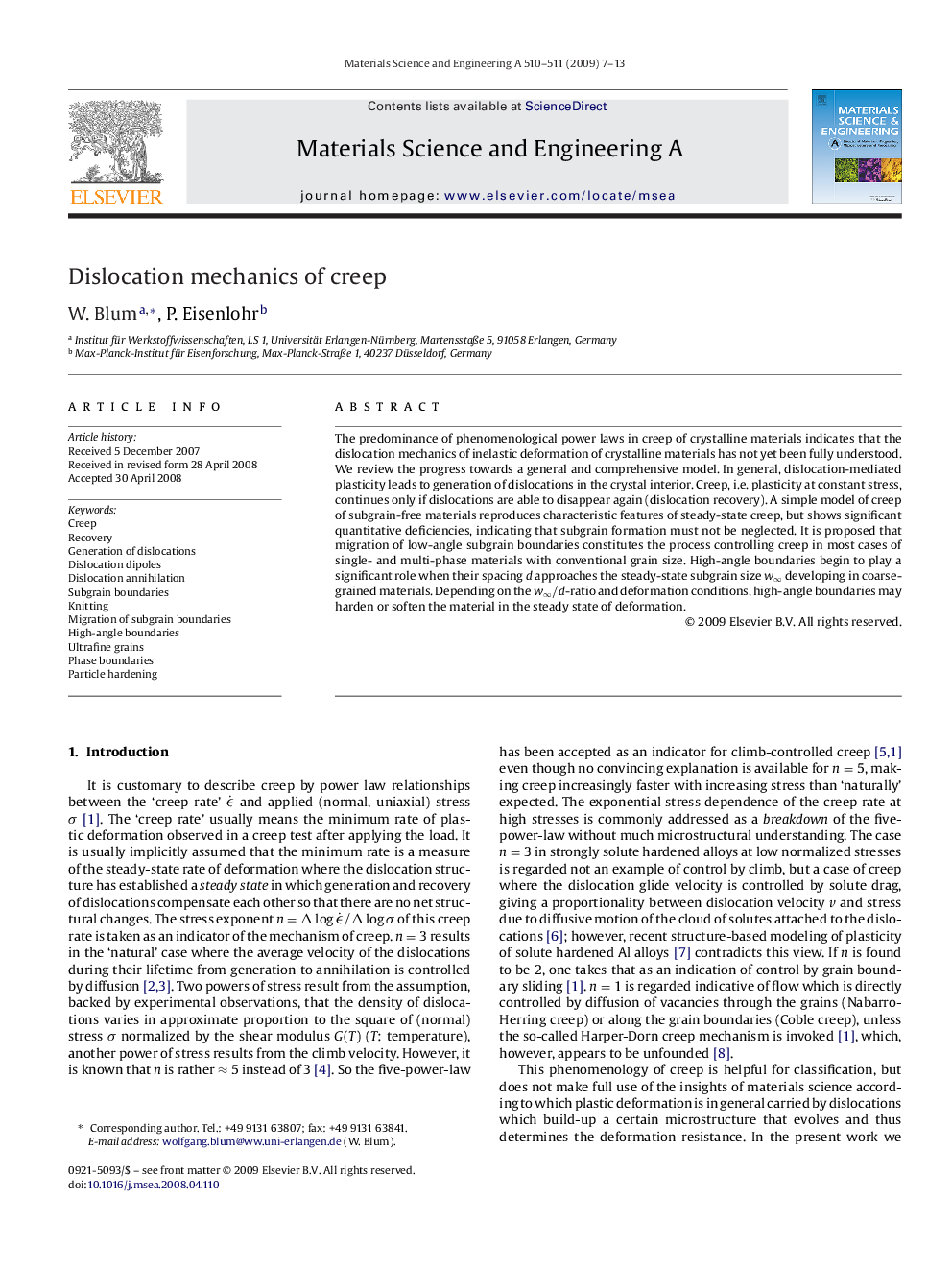| Article ID | Journal | Published Year | Pages | File Type |
|---|---|---|---|---|
| 1580725 | Materials Science and Engineering: A | 2009 | 7 Pages |
Abstract
The predominance of phenomenological power laws in creep of crystalline materials indicates that the dislocation mechanics of inelastic deformation of crystalline materials has not yet been fully understood. We review the progress towards a general and comprehensive model. In general, dislocation-mediated plasticity leads to generation of dislocations in the crystal interior. Creep, i.e. plasticity at constant stress, continues only if dislocations are able to disappear again (dislocation recovery). A simple model of creep of subgrain-free materials reproduces characteristic features of steady-state creep, but shows significant quantitative deficiencies, indicating that subgrain formation must not be neglected. It is proposed that migration of low-angle subgrain boundaries constitutes the process controlling creep in most cases of single- and multi-phase materials with conventional grain size. High-angle boundaries begin to play a significant role when their spacing d approaches the steady-state subgrain size wâ developing in coarse-grained materials. Depending on the wâ/d-ratio and deformation conditions, high-angle boundaries may harden or soften the material in the steady state of deformation.
Keywords
Related Topics
Physical Sciences and Engineering
Materials Science
Materials Science (General)
Authors
W. Blum, P. Eisenlohr,
